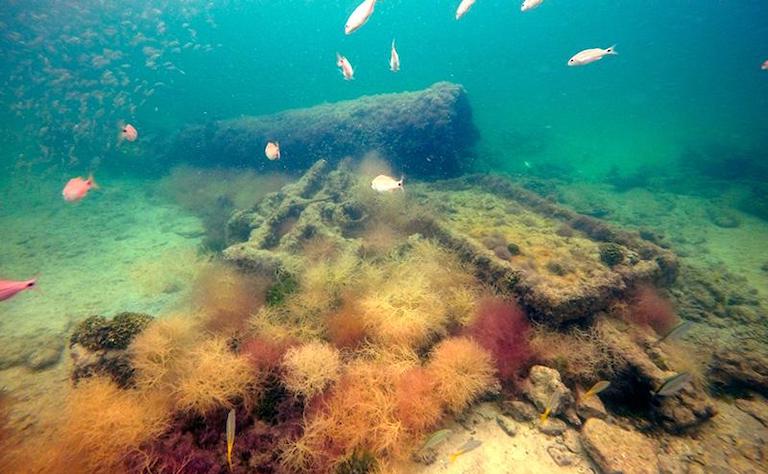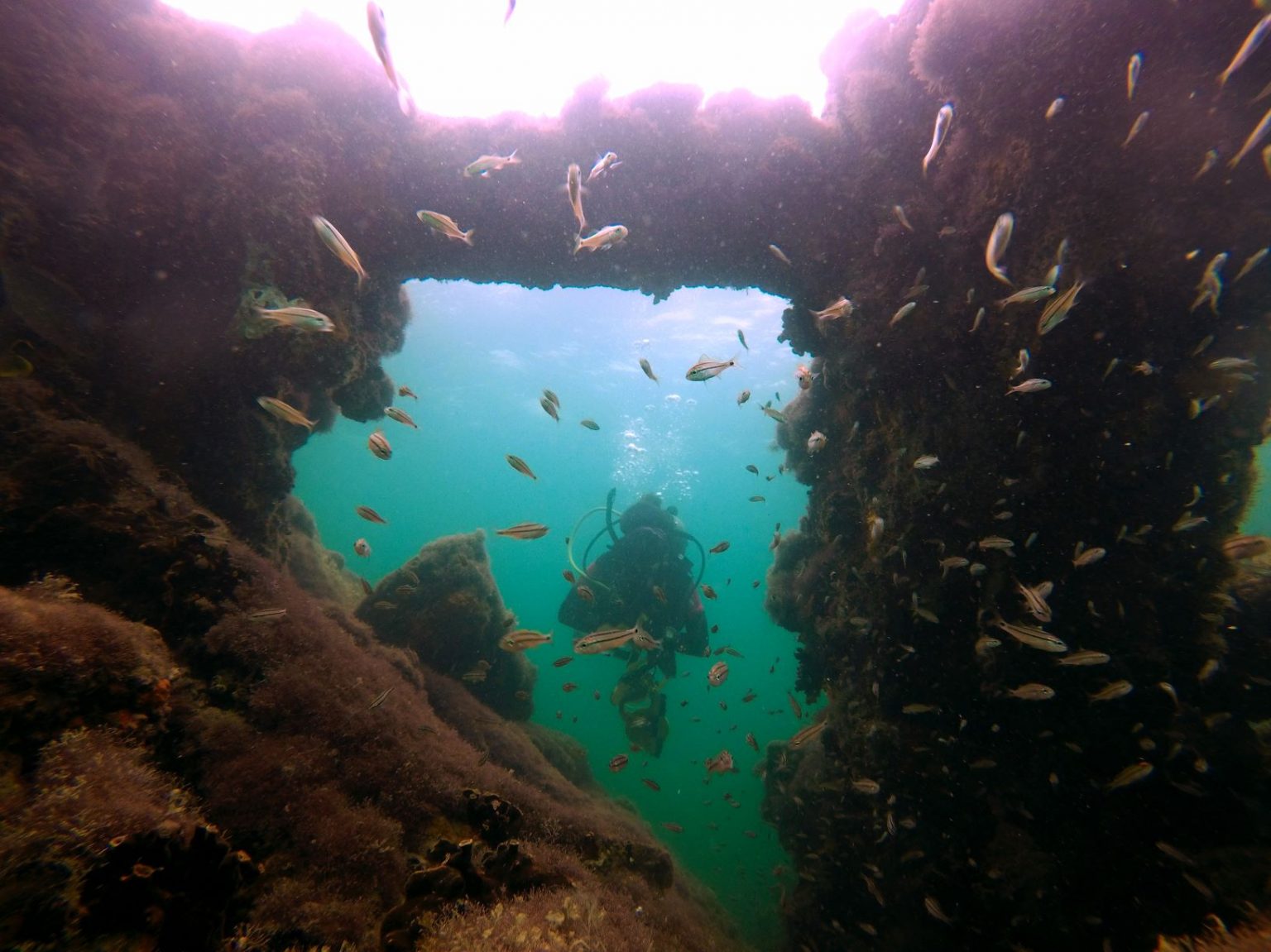Sisal, Yucatan (September 15, 2020).- Two nautical miles (3.7 km) from this Yucatecan port, a little-known story resurfaces thanks to the work of experts from the National Institute of Anthropology and History (INAH), who, as a result of a triennium of research, have identified to the steamer “La Unión“, the first ship that is known today was used for the Maya slave trade.

For the researchers of the Sub-Directorate of Underwater Archeology (SAS) of the INAH, the discovery is of singular relevance since, beyond how complex it is to identify a wreck ‘with name and surname’, it speaks of an ominous past for Mexico, which must be recognized and studied according to its historic context and time.
The foregoing acquires greater meaning when we take into consideration that, although slavery was prohibited since the Mexican Independence (1821), and despite the fact that, 40 years later, on May 6, 1861, President Benito Juárez issued a decree to prevent the forced extraction of any Maya individual, this wreck, that took place due to a fire on September 19, 1861, when the steamer was on its way to Cuba, is clear evidence that slavery continued in the region, against the law.
Within the framework of the campaign “With you in the Distance”, of the Secretary of Culture of the Government of Mexico, the underwater archaeologist Helena Barba Meinecke, head of the Yucatan Peninsula office of the SAS, comments that this research, developed with the support of the director of the INAH Yucatán Center, anthropologist Eduardo López Calzada, and the deputy director of Underwater Archeology at INAH, Dr. Roberto Junco Sánchez, is of international relevance given that until today a vessel that smuggled Mayan people had not been documented.

In recent years, he points out, other slave shipwrecks have been discovered: the “Clotilda” and “Henrietta Marie” ships, in Alabama and Florida, respectively; the “Troubadour”, in the Dominican Republic; and the “San José”, in Cape Town, South Africa; But they were known as ‘slave ships’, those that for more than 400 years stole people from Africa to sell them on the American continent.
The wreck “La Unión” was archaeologically located in 2017, within the framework of the Comprehensive Project for the Protection, Conservation, Research and Dissemination of the Underwater Cultural Heritage of the SAS, in coordination with the INAH Yucatán Center and the inhabitants of the region; that year, the remnants of a ship initially named “Adalio” were located.
The name was a homage to the grandfather of the fisherman Juan Diego Esquivel, who guided the archaeologists to the site.
It was observed that the wreck corresponded to a steamer from the first stage of this technology, dated between 1837 and 1860, when these ships were propelled with a system of boilers, rocking machines, and paddle wheels ‘Mississippi type’.
Although the boilers exploded and the boat caught fire, the bilge – the lower part of the hull, in the lowest area of the engine room and just above the double bottoms – dropped seven meters from the surface to the bottom of the shallow waters.
When covered with sand, the wood of the bottom of the hull was preserved until today, as well as still recognizable elements, such as paddle wheels, boilers, compartments, and objects for fastening such as copper bolts.
In addition, artifacts related to daily life were identified onboard, including fragments of glass from bottles and ceramics and even eight brass pieces of cutlery that were used by first-class passengers.
After that first field season, the SAS team began to investigate the provincial archives of Yucatán and Baja California Sur, as well as the national archives of Mexico, Cuba, and Spain. After a three-year process, enough information was gathered to corroborate that the “Adalio” is, in fact, the steamer “La Unión.”

Barba explains that the elements of coincidence were, for example: that the boilers were found exploded and the wood showed evidence of a fire; the harmony between the technology seen in the field and that described in the ship’s plans; as well as the actual location of the wreck, similar to that handled by private reports and press releases of the time.
The steamer “La Unión” belonged to the Spanish company Zangroniz Hermanos y Compañía, established in 1854 in Havana, which, a year later, was authorized to trade in Mexico, making crossings between Sisal, Campeche, Veracruz, and Tampico.
He usually brought first, second, and third-class passengers to Cuba, along with merchandise, such as henequen fibers, tanned hides, dyewood, and deerskin. However, their commanders were also in collusion with the slavers, who smuggled the Mayans that they captured or deceived inside small and unsanitary spaces within the boat.
A year before its sinking, in October 1860, the steamer had been caught in Campeche carrying 29 Mayans, among them boys and girls aged 7 to 10, but the derision did not end the smuggling of “La Unión.”
It was not until after that tragic September 19, in whose shipwreck half of the 80 crew members and 60 passengers died, that the Mexican government paid more attention to searches in ports, in order to prevent the trafficking of people on the routes to Cuba. It should be noted that the previous figures do not count Mayan slaves, since they were not considered people but merchandise.
Recovered history
The documents consulted by Abiud Pizá and Gabriel León, part of the SAS team in the Yucatán peninsula, refer that the shipping company Zangroniz Hermanos y Compañía was active during some of the most critical years of the Yucatán Caste War (1847-1901), in which indigenous and criollos clashed for reasons related to excessive tax collection and the grabbing of farmland.
A strategy that Hispanics and Mexican oligarchs used was to order, from 1848, the expulsion of those Mayans who were captured in combat (during the Caste War of Yucatan), hence many were sent to Cuba, as the island had a shortage of labor in the sugar cane plantations.
“Each slave was sold for up to 25 pesos to intermediaries, and they could be resold in Havana for up to 160 pesos for a man, and 120 pesos for a woman,” said the archaeologist.
The archaeologist pointed out that another way to get slaves was through characters called hooks of ‘enganchadores‘, whose job it was to go to tour towns of the Yucatan, such as Yxil, Kanxoc and Valladolid, to offer the indigenous people – many of whom had lost their lands due to the war – false papers to make them believe that they could migrate to Cuba as settlers, where they would have land and generate income.

Through “La Unión” and another Zangronis steamer called “México”, since 1855, an average of 25 and 30 people were chartered monthly, many of whom were never able to return to the Peninsula. However, a part of their memory lies in the Havana neighborhood of Campeche, where for generations many of the Mayan slaves and their descendants lived.
The historian Abiud Pizá investigated that, although Zangroniz is absent from Mexican documentation in the years immediately following the shipwreck, during the Second Empire and the Porfiriato he won contracts for the construction of railways.
Another way to learn about this part of Mexico’s history is to visit the Museum of Underwater Archeology (Marsub), Fuerte de San José el Alto, in the city of San Francisco de Campeche, whose Room 6, dedicated to the industrial revolution of navigation, exhibits, among others elements, the brass cutlery recovered from the steam “La Unión”.
San Miguel Times
Newsroom

